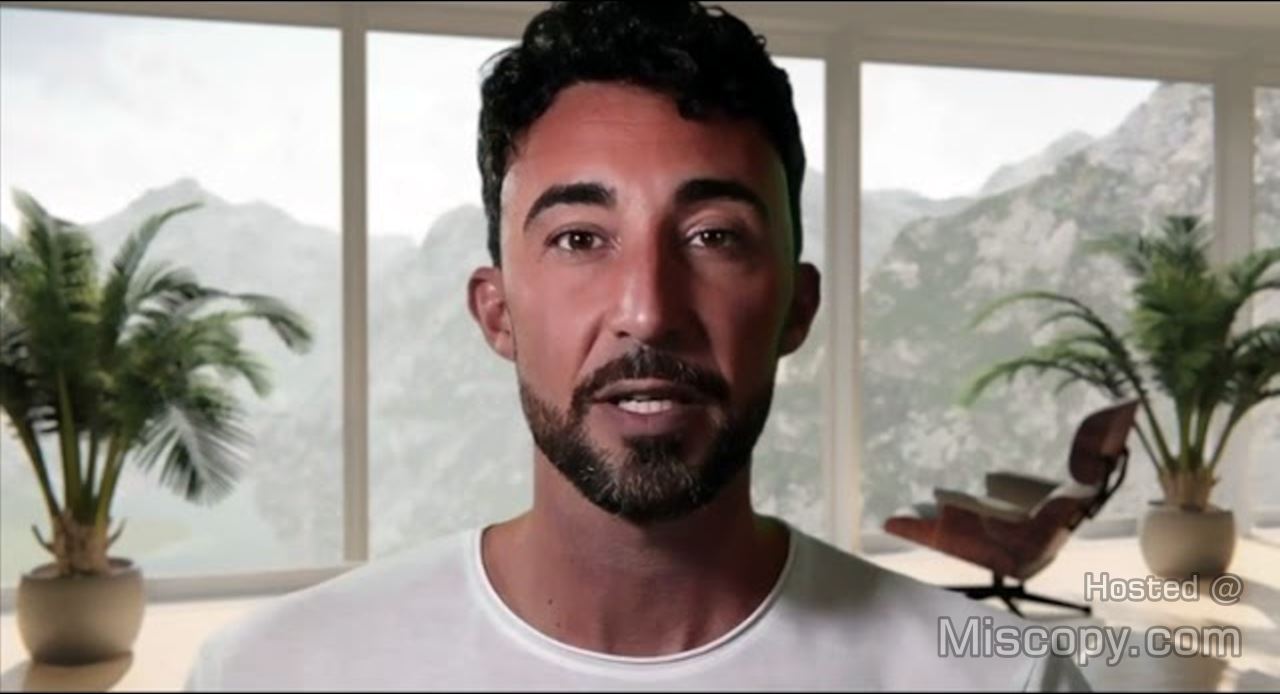The MONOPOLY: Who Owns the World Documentary by Tim Gielen discusses the consolidation of power in the hands of a small group of institutional investors who own the majority of shares in the world’s largest corporations across various industries. These investors include BlackRock, Vanguard, State Street, and Berkshire Hathaway, and they own the majority of shares in major tech companies, as well as food and beverage, travel, and primary industries.
Furthermore, the documentary highlights the ownership of major media outlets around the world, which creates synchronized reporting and manipulated information. The video warns about the looming threat of a potential dystopian society resulting from the Great Reset, which aims to create a new world order where nobody owns anything, and the elites control the population’s lives by taking their possessions and vaccinating them.
00:00:00
In this section of the video, the narrator explains that the food and beverage industry is largely controlled by a few mega corporations, such as PepsiCo, Unilever, Coca-Cola, Mondelez, and Nestle. These companies manage the majority of money flows on earth, and their boards are controlled by the largest shareholders. By researching information on company websites and Yahoo Finance, it is discovered that just a handful of institutional investors own the majority of shares in these companies, many of which include investment companies, mutual funds, insurance companies, banks, and governments.
00:05:00
In this section of the documentary, the speaker discusses the consolidation of power in the hands of a small group of institutional investors who own the majority of shares in the world’s largest corporations across various industries. The four biggest investment companies, BlackRock, Vanguard, State Street, and Berkshire Hathaway, are among the top shareholders of these companies.
This consolidation of power extends to the technology industry, where Facebook, Alphabet (parent company of Google and YouTube), Microsoft, and Twitter are among the dominant players, with the same institutional investors as their top shareholders. Even in industries such as travel, airlines, hotels, and restaurants, the same group of investors holds the majority of shares, and they also have a presence in primary industries such as mining and agriculture.
00:10:00
In this section, the focus is on the immense power and control of two companies, Vanguard and Blackrock, which are the largest institutional investors in the world. These two companies own shares in all major companies globally, forming a pyramid-like structure where the smaller investors are owned by the larger ones.
This monopoly is expected to grow and collectively manage $20 trillion in investments by 2028, making it likely that Vanguard and Blackrock will own almost everything on Earth. Vanguard is the largest shareholder in Blackrock, and since its structure doesn’t allow to know who its shareholders or clients are, it becomes impossible to know who holds the power in these companies. Reports show that one percent of the world’s population owns more money than the other 99 percent.
00:15:00
In this section, it is revealed that 82% of all the money earned in 2017 went to the top one percent of people, many of whom are also the richest billionaires in the world. The richest families on earth own Vanguard, one of the most powerful investment companies in the world.
These families are responsible for founding our banking system, the United Nations, and every industry in the world. They have always been at the top of the pyramid and have inherited their vast fortunes through monopolies. The private funds and non-profit organizations of these families are the largest shareholders of Vanguard.
Non-profit organizations, in general, lack transparency, and because they do not have to disclose their donors, they are ideal for financing terrorist groups and laundering money. The three most important non-profit foundations in the world that connect all industries together are: Bill and Melinda Gates Foundation, Open Society Foundations of George Soros, and the Clinton Foundation.
00:20:00
In this section, the video highlights how only two companies have a monopoly on all industries in the world, and a question is raised as to why the media does not cover this topic more widely. It is revealed that approximately 90% of the international media is owned by nine media conglomerates, including Viacom CBS, AT&T, NewsCorp, Fox Corporation, Walt Disney Company, and Comcast.
The video explains how these conglomerates are owned by institutional investors or elite families, and shows that in almost every country on earth, the local media is in the hands of these conglomerates.
00:25:00
In this section, the video discusses the ownership of major media outlets around the world and how they are interconnected. It begins by highlighting Bertelsmann, which owns a large part of French mainstream media, popular Spanish TV channels, and collaborated with the Nazis in the past.
The news media outlets do not produce their news themselves, but use information and images from news agencies such as Reuters, the Dutch AP, and the French AFP, all of which are not independent and are owned by powerful families or partially financed by governments.
The video also sheds light on important journalistic organizations such as the European Journalism Center, which trains journalists, produces study materials, and works closely with giant corporations such as Google and Facebook.
The article points out that there is a good chance that the text that newscasters read from their teleprompters comes from these organizations, leading to synchronized reporting. Finally, the video discusses a fund set up in September 2020 by Facebook and the European Journalism Center to support selected news organizations during the coronavirus crisis and highlights the organizations at the heart of producing our news, including the Bill and Melinda Gates Foundation, Open Society Foundation, and Facebook and Google.
00:30:00
In this section, the video discusses the coordination between all industries on earth to work for the interests of the elite, including the media, politics, and the largest companies. The World Economic Forum (WEF) is identified as one of the most influential organizations in the world, with CEOs of the largest companies, heads of state, and politicians gathering at its annual meeting in Davos.
However, critics argue that the WEF is a business forum where the wealthiest companies can negotiate deals with politicians for personal gain rather than solving global problems. The founder of the WEF, Klaus Schwab, has described in detail the plans of his organization in his book “The Great Reset,” with the COVID-19 pandemic seen as an opportunity to “reset” society and build back better.
00:35:00
In this section, the video explores the idea of a new world order and a global government, which is not a new concept and has been talked about by various presidents, philanthropists, and organizations such as the United Nations. The UN’s Agenda 2030 outlines a plan to eliminate poverty, hunger, and other societal problems by taxing citizens and contracting mega-corporations to rebuild society.
The UN and the WEF also see the COVID-19 pandemic as an opportunity to push their agenda forward. The video suggests that the elite has the power to manipulate public opinion and make people believe in their plans for a new world.
00:40:00
In this section, the video discusses the event that took place on October 18, 2019, where around 130 important guests, including politicians and medics, gathered at the Pierre Hotel in New York City to simulate a possible scenario in the event of a global pandemic.
The coincidence is unsettling that the simulation used coronavirus as an example, and the event was organized by the World Economic Forum, Melinda Gates Foundation, and John Hopkins Institute. Similarly, the German Robert Koch Institute conducted a similar simulation in 2012, assuming the spread of the coronavirus from animal to human, and its spread worldwide, destroying economies and even simulating protests.
The video also includes an excerpt from a lecture that Belgian top virologist Mark Van Ranst gave on January 22, 2019, at the Chatham House in London, discussing how he fooled the Belgian population during the swine flu crisis with fear-mongering and media manipulation to impose a vaccine for a virus produced by the pharmaceutical companies he worked for.
00:45:00
In this section, the individual in the video explains how the media can be controlled and manipulated to spread a particular narrative. The speaker shares that by controlling early coverage during an issue, news outlets can monopolize the area and become a primary source of information.
During the epidemic, the speaker shed light on Belgium and the UK and reported on realistic figures regarding H1N1 deaths. While discussing the topic, the speaker also shares that the elite do not have any intention to take care of the people, as they are interested in increasing their power, and global governance is the only way that they can have complete control over the population.
00:50:00
In this section, the video highlights the power and control that the elite, or “deep state,” have over the world. This elite group has conscripted vast human and material resources into building a machine that combines military, diplomatic, intelligence, economic, scientific, and political operations. They control America, and nothing is questioned, printed, or revealed.
The video discusses the fear-mongering tactics used by the pharmaceutical industry to keep people sick and dependent on drugs. The group also seeks to control people through blackmail, ensuring that those they control will do their bidding. The world is heading in a direction that closely resembles the dystopian society described in George Orwell’s “1984.”
00:55:00
In this section, the video warns of a potential nightmare situation resulting from the Great Reset, which aims to create a new world order where nobody owns anything. The elites plan to achieve this by causing a devastating economic crisis and eliminating cash money, forcing people to depend on government support, which includes giving up private possessions and accepting a vaccination passport.
Entrepreneurs are the first to fall to this plan, while the middle class is attacked, and banks will fall. However, the video warns that this is not a doomsday scenario created by the author, but an actual plan that has been prepared for generations. The video urges people to create a great awakening and work towards a sustainable and fair world where no one goes hungry, there is no pollution, diseases, or wars, and governments work for the welfare of the people.
01:00:00
The conclusion of the “MONOPOLY: Who owns the world” documentary leaves viewers with hope for a future where people can lead dignified lives without excessive work and without manipulation by those in power. While acknowledging challenges ahead, the video encourages recognition of societal issues as a first step towards addressing them. The video ends with a call to action for viewers to work together towards building a more equitable society.
01:05:00
This section of the video concludes the documentary by sharing a message of hope for the future. The narrator believes that a future where people no longer have to work excessively to lead dignified lives, and one where those in power cannot manipulate the masses using the media and other means of control, is on the horizon. However, they acknowledge that there will be challenges ahead and that we must recognize the problems in our society to address them. The video ends with a call to action, urging viewers to embark on the journey towards a more equitable society together.
YouTube Video
https://www.youtube.com/watch?v=7JRKGJS26l8







